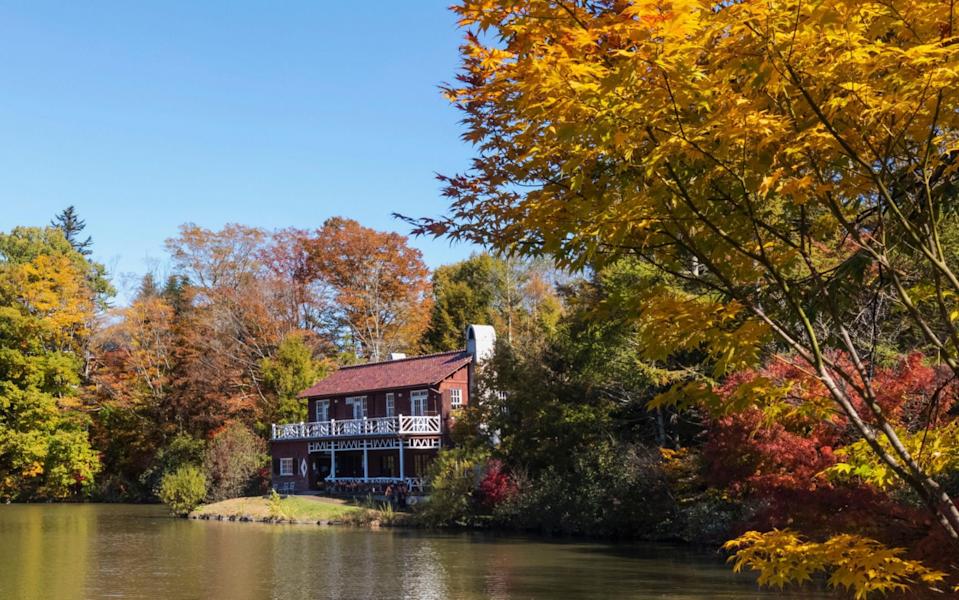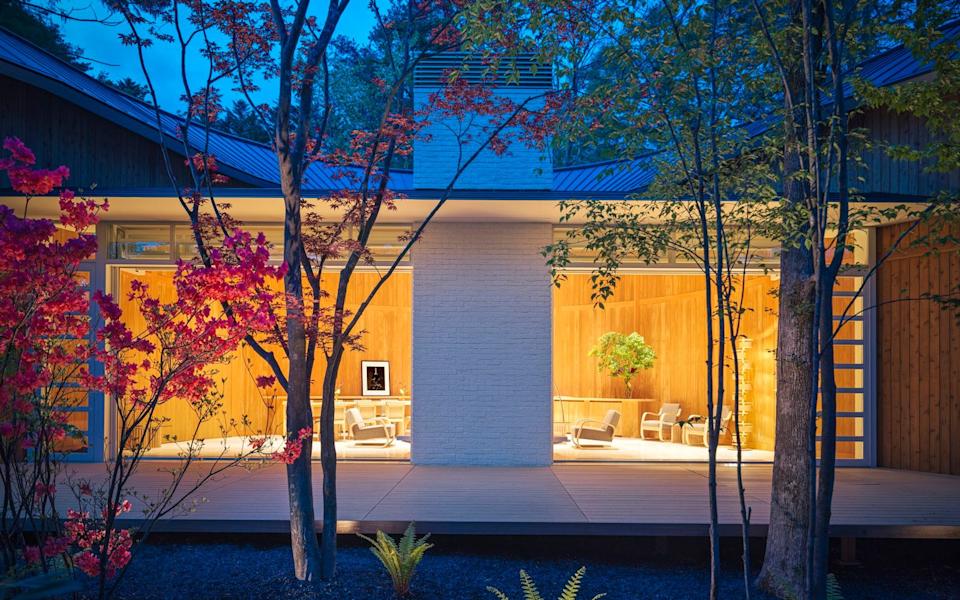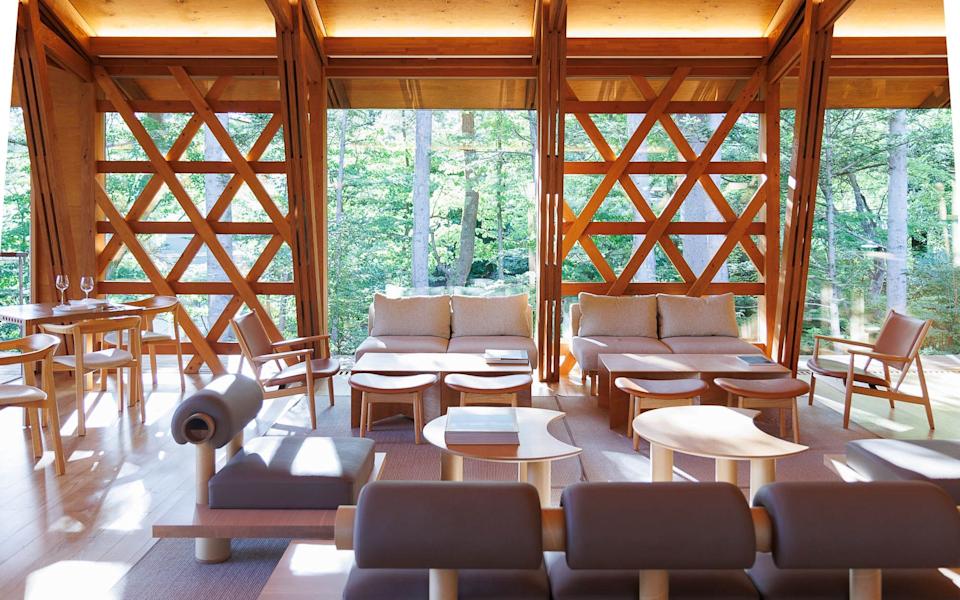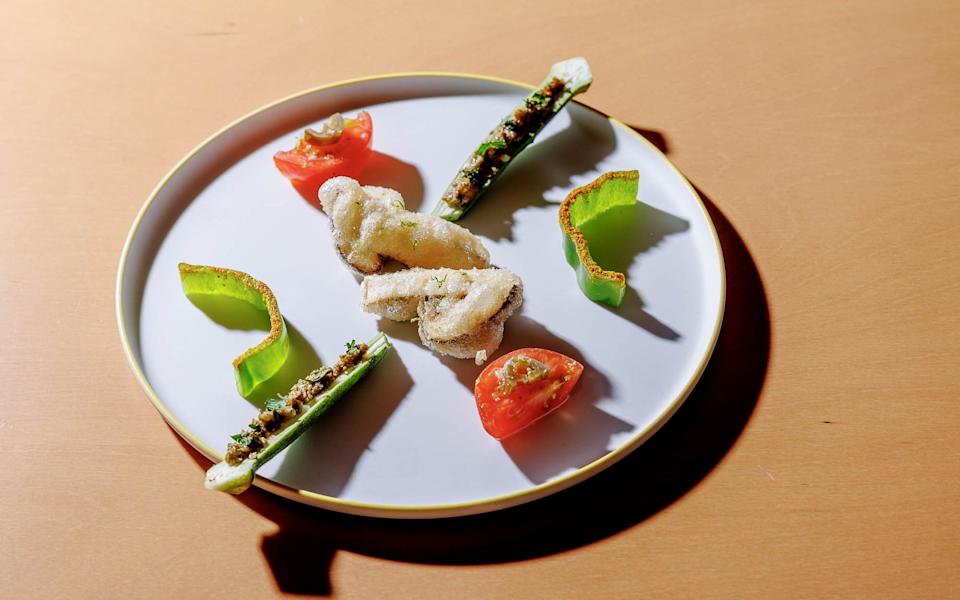I hadn’t expected to be retracing the steps of John Lennon as I walked through Onioshidashi Park in Japan, a charcoal-hued nature reserve filled with sculptural volcanic rocks, formed by a massive eruption of Mount Asama in 1783.
And yet, the legendary musician – who once visited this park – is an unofficial icon of Karuizawa, an upscale resort town in Japan’s Nagano prefecture, roughly an hour from Tokyo by train. In 1976, Lennon and his family spent four consecutive summer holidays here, staying at the storied Mampei Hotel. This century-old hotel is now a must-stop for Beatles fans, where it’s become customary to order Lennon’s favourite – apple pie and Royal milk tea – while enjoying the bucolic surroundings.
But Lennon isn’t the only celebrity associated with Karuizawa – or, indeed, the only reason to visit. This charming town is the summer retreat of Japan’s Imperial family (it was on a tennis court here that Crown Prince Akihito met his future wife, Michiko Shoda, in 1957), and it’s thanks to these royal ties that Karuizawa has long been a place for affluent Japanese to decamp to their second homes, seeking a change of pace and fresh mountain air.

Karuizawa is renowned for its lush woodlands, which is dotted with ponds and lakes – alamy
It’s easy to see the appeal: Set at the foot of Mount Asama at an elevation of 1,000m, Karuizawa is blessed with peaks, ponds and waterfalls. It looked especially alluring when I visited last autumn, with fiery momiji leaves blanketing popular tourist spots Kumobaike Pond and Sengataki Waterfalls.
It’s an outdoors sort of place – golf in the summer, skiing in the winter, hiking and cycling at any time of year – and boasts a bounty of hot-spring onsen, perfect for rejuvenating tired bodies after all that physical exertion.
But despite its reputation as “the Hamptons of Japan”, Karuizawa is less see-and-be-seen and more quiet luxury. Instead of conspicuous displays of wealth, I found the verdant landscape complemented by eye-catching architecture.

An understated elegance can be found in Karuizawa’s architecture – alamy
There’s the Hiroshi Senju Museum, a sinuous building designed by Pritzker Prize award-winning architect, Ryue Nishizawa, where Senju’s mesmerising waterfall paintings contrast with curved-glass courtyards that flood the room with immaculate natural light. Barely 10-minute’s drive away is the Karuizawa New Art Museum, dedicated to contemporary art and home to an oft-photographed glass chapel conceived by Kengo Kuma.
The creative atmosphere of Karuizawa – home to an unusual concentration of buildings by world-renowned architects – was one of the draws for Huy Hoang, a Singapore-based investor-turned-first time hotelier. In 2019, he established Shishi-Iwa House, a collection of architecture-driven retreats designed by Shigeru Ban and Ryue Nishizawa, which received One Michelin Key in 2024.

Shishi-Iwa House is defined by a thoughtful approach to design – Jonathan Leijonhufvud
“I first arrived in Karuizawa in 2015, captivated by its blend of lush scenery and refined sophistication, evident in its art museums and historic architecture,” he says. “I remember seeing a wall-sized Mark Rothko painting at Sezon Museum of Modern Art. I gasped in disbelief and I wanted to have Shishi-Iwa House as close to it as possible.”
Surrounded by greenery, everything in Shishi-Iwa House is thoughtfully designed and meticulously curated, but there’s no preciousness about it. I had a nightcap with friends at the Grand Room, sitting on Alvar Aalto furniture with an abstract work by master photographer Hiroshi Sugimoto right in my line of sight.

Karuizawa’s lush scenery and sophistication are reflcted in the design at Shishi-Iwa
Of course, a key factor for most visitors to Japan is its food – and here, too, Karuizawa does not disappoint. Excellent food is everywhere, with fine dining restaurants lined up next to historic eateries, most using only produce grown in Nagano’s fertile volcanic soil.
For breakfast, I visited Shola, a treehouse-like restaurant that champions locally sourced ingredients, working with the likes of Duca, an artisanal farm that grows 100 herbs and vegetables. For lunch, I made it a mission to go for soba (Japanese buckwheat noodles), a Nagano speciality, at Meiji-era Kagimotoya, the oldest soba restaurant in Nagano. I saw the noodles being made by hand downstairs, and I enjoyed my zaru soba with a side of tempura, all for 2,000 yen (£10).

Locally sourced ingredients are given pride of place at Shola – Hiroaki ISHII
Like the Hamptons, Karuizawa could hardly be considered unknown – and yet, despite its proximity to Tokyo and all the refined treasures it has to offer, it remains little known to the country’s hordes of visitors. They’d do well to discover it, however. Whether visiting to escape Tokyo’s humid summers, to take in its glorious autumn colour, or to experience the secret corners known only to its well-heeled part-time residents, one thing’s for sure – you’ll be itching to get back.
Essentials
Kissa Castañeda was a guest of Shishi-Iwa House, which has doubles from £280 per night, including breakfast. British Airways flies direct from London to Tokyo from £931 return. From Tokyo, it takes one hour on the shinkansen to reach Karuizawa, and costs £29 one-way.
Broaden your horizons with award-winning British journalism. Try The Telegraph free for 1 month with unlimited access to our award-winning website, exclusive app, money-saving offers and more.


AloJapan.com